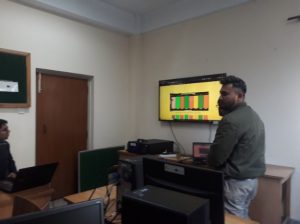Course overview
The course aims to familiarize students with basic concepts of knowledge engineering. In addition, the course aims to teach basics of knowledge acquisition methods, IR, NLP, and machine learning techniques. The course builds skills on knowledge representation, logic, and reasoning. Finally, the course builds knowledge ontology engineering and the semantic web.
Participants in piloting
This is a 1st semester introductory core course offered in the M.Sc. in Computer System and Knowledge Engineering program of the Department of Electronics and Computer Engineering, Pulchowk Campus, IOE, Tribhuvan University. 20 students are typically enrolled in the course each year.
Use of ALIEN services and tools
Students are divided into groups of 5 individuals. Each group is assigned a mini-project. The mini-project is a case study, in which students are challenged to develop a simple knowledge-based system that will be useful for the institute. A sample mini-project was to develop a system for student performance analysis in semester exams and to correlate the calculated data to entrance exam and high school scores.
To implement the project, each group of students collected and reviewed material from the web and campus intranet. Students participated in meetings and interacted with experts of the concerned knowledge domain collecting additional reference information. Students were exposed to potential solutions by researching the web. Based on their findings they proposed a knowledge-based system for solving the assigned problem. Groups presented their suggested solutions and received feedback by other groups, the instructor, and the domain experts. They developed a solution prototype and demonstrated its functionality in a presentation to other groups, instructor, and the domain expert upon completion of the activities.
The activity took place in the ALIEN problem-based learning lab, which includes workstations, projectors, and internet support. Students used software tools such as Microsoft® PowerPoint for delivering presentations. They further used database and knowledge management platforms for developing their software solutions. Students used reference material on the fundamentals of knowledge engineering from the web. They further used books on artificial intelligence from the university library.


In the beginning of the course the students used workstations and lab connectivity to explore sources and collect required data and documents. They downloaded the material from the internet and proposed and proposed a solution to the assigned problem. Students presented their idea to the class and received feedback by the instructor, their peers, and the domain expert. Subsequently, students setup the required software development environment on the computers for developing the software code required extracting information for their project. Students demonstrated their final solutions upon completing the activity. The presentations were used as the basis for student evaluation.


